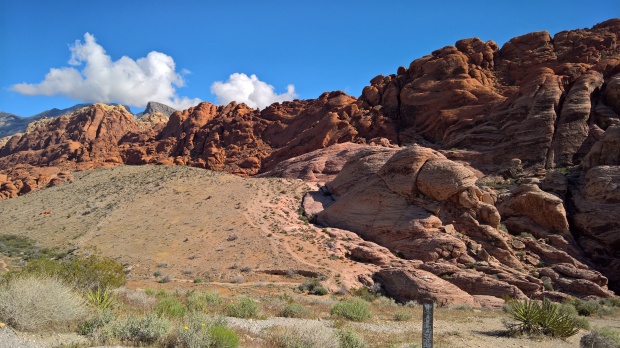This is an email from Steve Pauly … a good friend of mine we may be lucky enough to have with us on the e2e. He has done the Philmont hike and others recently. Here are some of his thoughts on gear based on his experiences.
Thought I would look a bit at packs, and share one site that gives a bit of an overview:
http://www.cleverhiker.com/best-backpacking-backpacks/
My pack currently is an REI Flash 65. I am not entirely sure they still make it, and I think it weighed around 3.5 pounds. I have heard a lot of good things about Osprey and I have a Talon pack from them that I used on our practice hike, and am thinking of getting something by them … looking at the Exos 58 at REI right now online, or perhaps the Aether or Atmos…
For a multi-day trip, Philmont recommended that the boys use a 60-70 Liter pack size (if I remember correctly), and the 65 Liter Flash worked fine. Ultralight packs are typically in the 1 to 3 pound range, and usually can’t carry more than 30 lbs very comfortably. At Philmont, I carried around 38-45 pounds. Packs weighing 7 pounds or more are also out there…I personally would stay away from a pack that weighs more than 5 pounds. I recall hearing that the larger the pack, the more stuff you will carry and the more weight you will end up with…so keep the pack smaller to make yourself not carry it. It is a bit difficult when doing multi-day trips though, as you need the space and load bearing capability to carry the food for the extended trip.
It will be important to decide on some things regarding shelter, food, and cooking. The size of the pack needs to be larger if carrying large items like 4 quart-8 quart pots that work for the entire group…like we did at Philmont. Personally, I would prefer to carry my own small stove and small titanium pot (butane, stove, lighter all stow within pot), but it would be inefficient to use it for everyone, and depends on how we are doing meals. I have a larger Whisperlite stove that uses liquid “white gas” fuel which we used at Philmont if you want to try it out. I have heard that many AT thru hikers go with homemade coke/beer/catfood can stoves that burn alcohol. Easy to resupply at small towns, light weight, and pretty efficient for stretching alcohol fuel, but slow to boil compared to the butane stove I usually use. I made one of these and it did work, so perhaps a very light weight way to go? This one seems to have a lot of fans:
http://jwbasecamp.com/Articles/SuperCat/index.html
I believe we went 3 to 4 days at Philmont before resupplying and recall stopping at a resupply area twice in 11 days of hiking. The food was packaged and labeled in clear plastic bags where each bag was one meal for two people. The only hot meals were dinners, and otherwise it was always cold stuff, and pretty good…pop tarts, bags of nuts, granola, some specialized stuff made for hiking…etc. Lunches were the same and usually had some meat in a pouch like spam or small cans of chicken, along with ritz crackers, cheese sticks, raisins, etc. They usually included gatorade mix, which I skipped because I didn’t want to permanently stain my water bottle, until the end when I caved. Dinners were the usual dehydrated meals where you add boiled water and mix/wait and then eat. One of these meals was memorable because there was a box of stove top stuffing which took us by surprise. The boys did all the cooking and I believe we had two pots, one that was used to boil water and one that was used to mix the meal up for everyone. This was group cooking for dinner.
I am thinking of trying to hammock the whole thing, or use the hammock fly as a shelter if there happens to be a spot with no trees (yeah right, no trees here?). I will go along with whatever you and the group want to do though. I have a large sil-nylon tarp that we used to shelter our backpacks and gear each night (no backpacks in shelters as extra precaution against attracting bears to any smells of food that might remain in the pack), which I can bring in if you want to consider it as a group shelter. I wouldn’t want to put a pole int he middle to support it as it might poke thru, and instead we used two trekking poles at the ends to pull it out and then staked down the corners and sides.
Crew gear at Philmont:
- Large first aid kit (I carried this)
- Couple of large pots
- Whisperlite stove
- 2 fuel bottles for the stove
- One multi-tool (I carried this)
- Mixing spoons
- Cleaning supplies
- One large tarp Rope for hanging bear bags
- Tents (2 per tent)
- Dromedarys – 2 bags for storing/carrying water to dry camp sites
- Water purification tablets (no filters needed)
- Toilet Paper
Each person carried their own sleeping bag, pad, clothes, head lamp, and 3 liters of water. We each had a small bowl and our own spoon. Every person had to have rain jackets and pants. I had one pair of convertible pants (same as I used Saturday), couple of changes of underwear, a few pairs of socks, two t-shirts, and one longer sleeve heavier shirt, a fleece beanie, and some thin gloves. It got real cold at 9000 feet or so one morning. NO COTTON. I think we all brought some crocks or something to change into in camp to rest our feet from the boots. I also think we all brought small lightweight camp chairs. I also had a small solar cell and rechargeable battery pack which I strapped to the top of my pack. This charged up while hiking and I used it to charge my phone overnight. My phone was left in airplane mode, but this allowed its GPS to track our progress on the My Tracks app from Google, so that I could generate maps when we returned.
My impression was that the food was by far the bulkiest thing we carried. Packs were heavy and really stuffed full when resupplied, and refreshingly light and emptier just before resupply. I think the food was not necessarily packaged to be the smallest, but there was plenty of it and it was good trail food. I suspect this will be the hardest thing to work out with a group…what food to bring and resupply with and whether it is individually prepared or group prepared. I have been on camping trips where boys have pulled out boxes of donuts and loafs of bread to make a sandwich and where hanging up the bear bags at night nearly brings down a tree with the weight of the extra food some of them seem to bring. We also have brought eggs just for the challenge of packing them so they don’t break.
Steve
Thanks, Steve, for your insights. We will have more discussions about gear shortly.
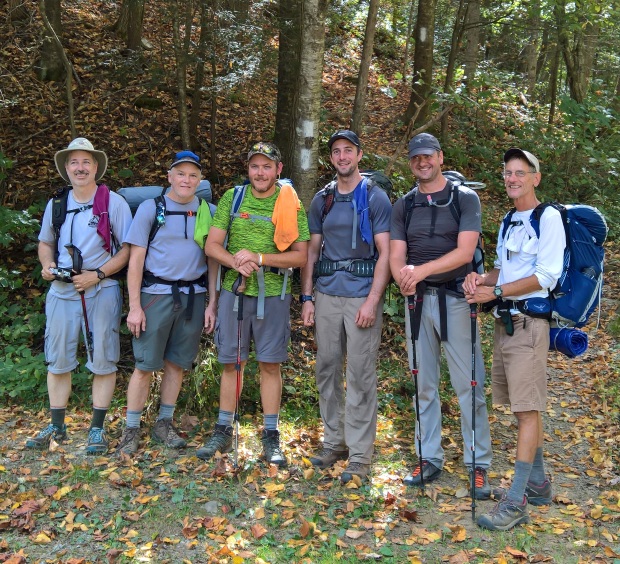

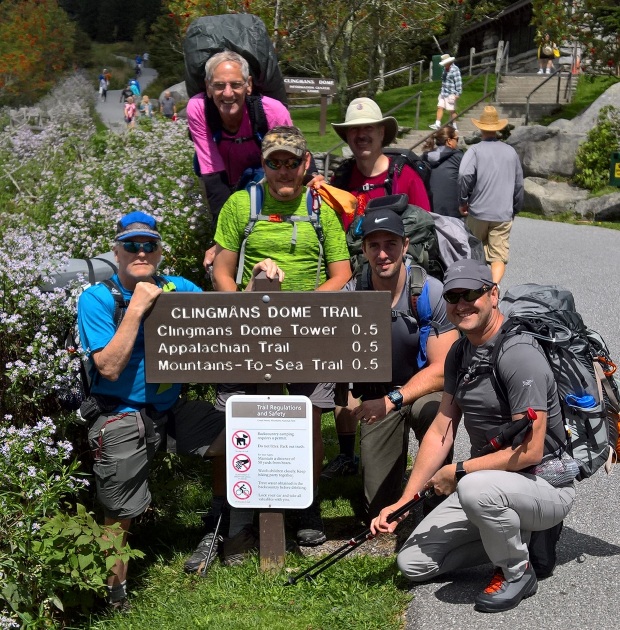
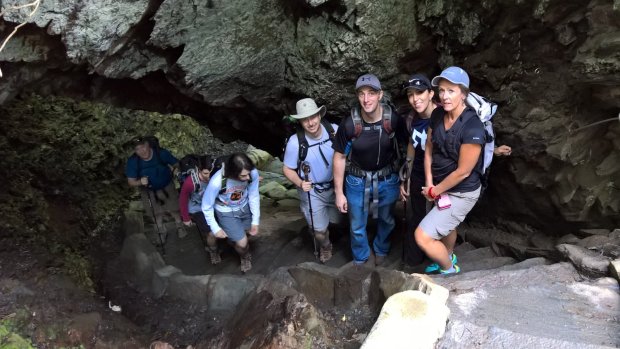
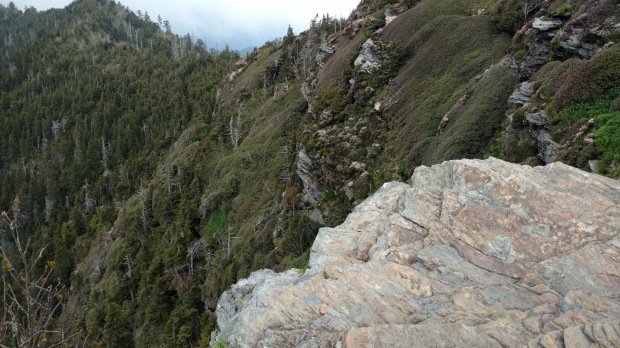


 Steve ‘I aint afraid of no snake’ Pauly got in a Haw hike and ran into a friend. This is a good time to dole out a safety tip. If you see a snake (an easily recognizable pit viper in particular), we do not recommending bonding or hanging around for photos etc. Lots of amateurs weighed in and we are pretty sure it is a copperhead. That said, great photo, Steve.
Steve ‘I aint afraid of no snake’ Pauly got in a Haw hike and ran into a friend. This is a good time to dole out a safety tip. If you see a snake (an easily recognizable pit viper in particular), we do not recommending bonding or hanging around for photos etc. Lots of amateurs weighed in and we are pretty sure it is a copperhead. That said, great photo, Steve. Christina Boone and myself started early on Norris Watershed. We got in 6.5 miles with about 1600 ft of cumulative climb. The climbs included Eagle trail and Ridgecrest.
Christina Boone and myself started early on Norris Watershed. We got in 6.5 miles with about 1600 ft of cumulative climb. The climbs included Eagle trail and Ridgecrest. Thanks to a friend of mine, Kenny Edwards, I was lucky to get a chance to overnight in Leconte Lodge Friday (May 6). Of course, you have to get there and get back.
Thanks to a friend of mine, Kenny Edwards, I was lucky to get a chance to overnight in Leconte Lodge Friday (May 6). Of course, you have to get there and get back.

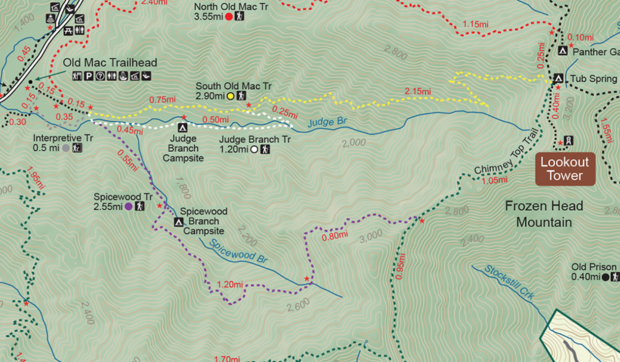
 four hours we got in 8.7 miles but a mere 1295 ft of climb. We were really shooting for distance this time. We stuck mostly to the perimeter trails. I’d like to see more participants but I thought it went really well.
four hours we got in 8.7 miles but a mere 1295 ft of climb. We were really shooting for distance this time. We stuck mostly to the perimeter trails. I’d like to see more participants but I thought it went really well.
